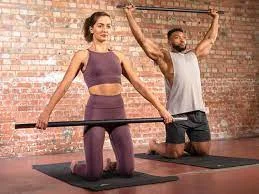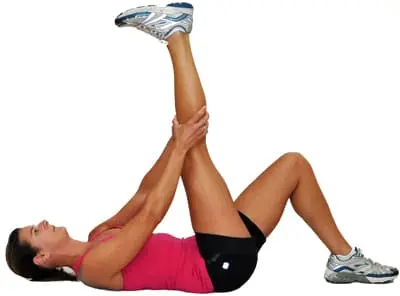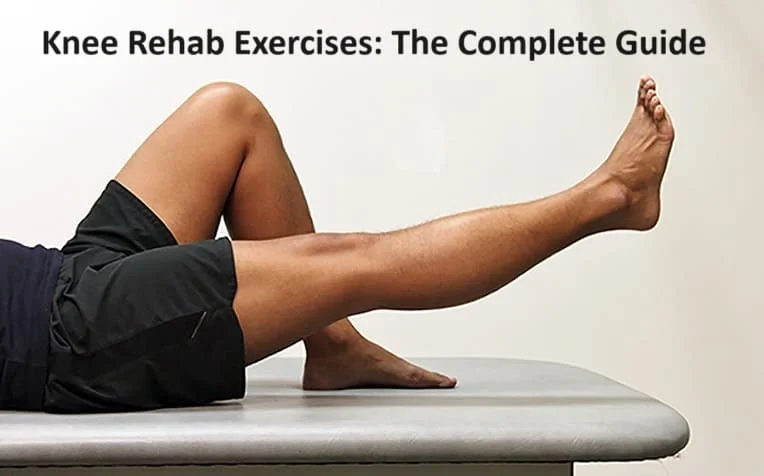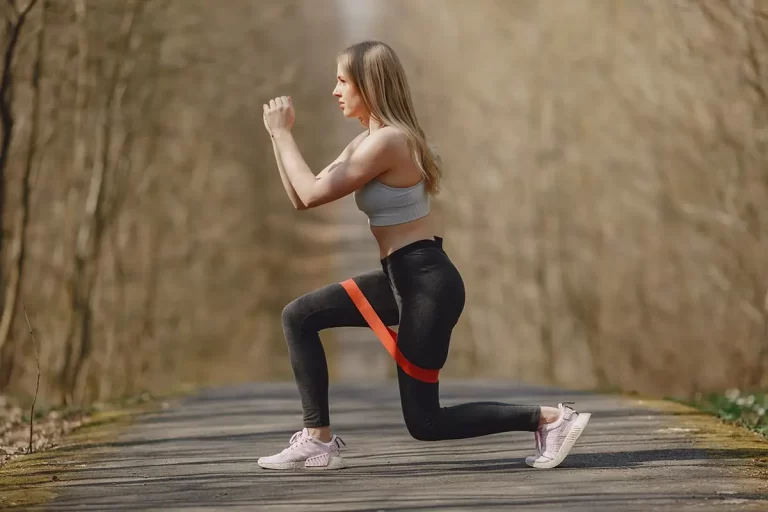21 Best Exercises to Improve Mobility Of The Shoulder
Introduction
Shoulder mobility refers to the shoulder joint’s capacity to move over its whole range of motion. The shoulder is a complex joint with a wide range of motion, allowing us to lift our arms overhead, reach behind our backs, and rotate our arms inwards and outwards.
Good shoulder mobility is important for everyday activities such as reaching for something on a high shelf, putting on a coat, and brushing our teeth. It is also essential for athletes who participate in sports that require a lot of shoulder movement, such as swimming, baseball, and tennis.
If your shoulders are tight, you’re still healing from an accident, or you simply want to strengthen your shoulder muscles, there are several stretches and exercises that may be quite beneficial.
If you include exercises and stretches designed specifically for the shoulders into your regular fitness routine, your shoulder mobility and flexibility may improve. These exercises may also help you avoid injuries by strengthening your shoulders and enhancing shoulder functionality. the stretches and exercises for the shoulders that could increase your functional fitness and ease shoulder movement.
Define Shoulder Mobility Mean.
Shoulder mobility is the capacity of the shoulder joints to move through all of the several planes of motion that are possible at the joint (flexion, extension, abduction, adduction, external rotation, and internal rotation).
The flexibility of the muscles around the shoulders as well as the freedom and restriction of the joint itself can play a role in this.
Flexibility and mobility are separate terms even though they are frequently used interchangeably.
Flexibility is the term used to describe a muscle’s capacity to lengthen. On the other hand, a joint’s mobility is its capacity to move over its whole range of motion. It’s important to know where the restriction is because they both are related to the full range of motion of the shoulder.
Joint mobility and the actual biomechanics of the ball and socket joint, in my experience as a physical therapist, appear to be far more important than the factors in instability.
You’ll notice that many of the motions have two sections:
Pulsing irregularly while stretched keeps the stretch.
It has been proven that combining static and dynamic stretching can increase your body’s range of motion and comfort.
Relax into the holds without forcing yourself to get into them.
As a result, your nervous system will come to understand that this is a stable position for you.
There are a number of causes of tight shoulder joints, including:
- Overuse: Overusing the shoulder joint, such as from repetitive movements in sports or at work, can cause the muscles and ligaments around the shoulder to tighten up.
- Injury: An injury to the shoulder joint, such as a rotator cuff tear or a dislocation, can also cause the muscles and ligaments around the shoulder to tighten up.
- Poor posture: Poor posture can put stress on the shoulder joint and lead to tightness.
- Aging: As we age, the muscles and ligaments around the shoulder joint naturally become less flexible, which can lead to tightness.
- Certain medical conditions: Certain medical conditions, such as arthritis and diabetes, can also cause shoulder tightness.
If you have tight shoulder joints, you may experience pain, stiffness, and reduced range of motion. You may also have difficulty performing everyday activities, such as reaching overhead and putting on a coat.
If you are experiencing tight shoulder joints, it is important to see a doctor or physical therapist to determine the underlying cause and develop a treatment plan. Rest, physical therapy, and medication are all possible forms of treatment.
How to improve shoulder mobility?
There are a number of things you can do to improve your shoulder mobility, including:
- Warm up before exercise: Warming up your shoulders before exercise will help to prepare them for movement and reduce the risk of injury. Some simple warm-up exercises include arm circles, shoulder shrugs, and shoulder dislocations.
- Stretch your shoulders regularly: Stretching your shoulders regularly will help to improve their flexibility and range of motion. Some good shoulder stretches include the door frame stretch, the sleeper stretch, and the cross-body stretch.
- Do shoulder mobility exercises: There are a number of specific exercises that can help to improve shoulder mobility. Some examples include:
- Arm circles: Stand with your arms at your sides and make small circles with your arms, gradually increasing the size of the circles.
- Shoulder dislocations: Stand with your arms at your sides and raise your right arm overhead. Bring your right hand behind your head while bending your elbow. Reach your left hand behind your back and try to clasp your right hand. Hold the stretch for 30 seconds before repeating on the opposite side.
- Shoulder shrugs: Shake your shoulders up toward your ears while standing with your arms at your sides. Hold the shrug for a few seconds and then relax. Repeat 10-15 times.
If you are new to shoulder mobility exercises, it is important to start slowly and gradually increase the intensity and duration of your workouts over time. Additionally, remember to pay attention to your body and stop if you experience any pain. Here are some additional tips for improving shoulder mobility:
- Maintain good posture: Good posture will help to keep your shoulders aligned and reduce the risk of injury. When standing, make sure that your shoulders are relaxed and your spine is straight.
- Avoid repetitive movements: Repetitive movements can put stress on the shoulder joint and lead to injury. If you have a job or hobby that requires repetitive shoulder movements, take breaks often to stretch and relax your shoulders.
- Strengthen your shoulder muscles: Strong shoulder muscles will help to support the shoulder joint and improve its range of motion. Some good shoulder strengthening exercises include rows, presses, and flyes.
If you have any concerns about your shoulder mobility, be sure to talk to your doctor or a physical therapist. They can help you to develop a safe and effective exercise program to improve your shoulder mobility.
Here are some tips for doing shoulder mobility exercises:
- Start with small ranges of motion and gradually increase them as you become more comfortable.
- Move slowly and with control.
- Breathe deeply and evenly throughout the exercises.
- Don’t push yourself too hard. Stop the activity as soon as you feel any pain.
Shoulder mobility exercises
Your shoulder muscles and joints can become more mobile and strong with exercises made only for the shoulder. These exercises may also aid in minimizing tension that can lead to injuries.
Before beginning any of these exercises, spend 5 to 10 minutes warming up with dynamic upper-body stretches including arm circles, arm swings, and spine rotations.
Snyder maintains that warming up in this way is quite effective for increasing blood flow to a specific area, which additionally improves performance.
If you’re recovering from a shoulder injury or surgery, work with a physical therapist who can show you how to carry out the stretches and exercises that are best suited for your situation.
Warm-up Exercise
Performing a shoulder roll
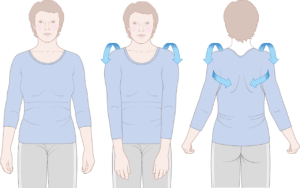
Maintain a tall, straight posture.
Arms at rest, shoulders lowered toward ears.
Spend 30 seconds circling your shoulders.
Continue in the reverse direction.
Do this 2-4 times.
pro Advice: Visualize an elastic band pulling on your head.
up straight.
Arm stretches like this swing session is great. Your range of motion may be improved, resulting in more fluid movement.
Active Pendulum mobilization exercise (Swinging one’s shoulders)
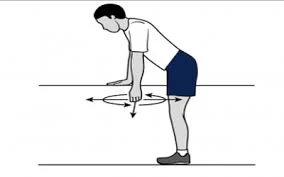
Shoulder pendulum swing technique:
Put your right arm on a chair or table for support.
Lie back and let your left arm dropdown.
Swing your left arm slowly in the air.
Make a series of little circles.
Expand the circles gradually.
After one minute, turn around.
On both arms, repeat for a total of 4-6 minutes.
You can either sit down or stand up for this exercise. Choose whatever makes you most comfortable.
Chest expansion
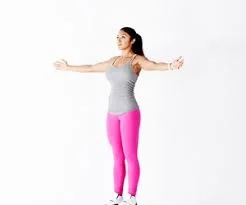
Chest expansion is a great technique to stretch your back muscles, expand your chest, and improve your shoulder range of motion. Snyder claims that it can also help your lungs expand so that you are able to take in more oxygen.
To perform this stretch:
Put your feet together and stand tall.
With your arms behind your body, hold the end of a towel or exercise band in each hand.
Use the towel or band to assist you in raising your shoulder blades together and opening your chest. This will make you look up at the ceiling.
Maintain this position for at least 30 seconds. Repeat 3-5 times more.
Arm swings when seated
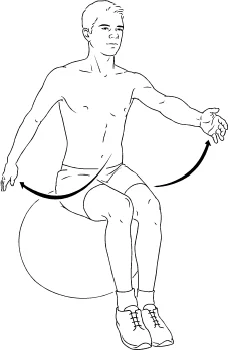
This dynamic workout is excellent for improving blood flow to the shoulder joint.
You can increase the mobility and flexibility of your shoulders and upper back by practicing this exercise as part of a warm-up before conducting upper body workouts.
To complete this activity:
Holding your arms at your sides, stand tall.
Swing your arms forward as high as you can while keeping your core relaxed. Make sure your shoulders aren’t raised.
Repeat by raising your arms back to the beginning position.
Spend 30 to 60 seconds performing this motion.
Quadruped Shoulder Circular Movement Full-ROM (Range of movement)
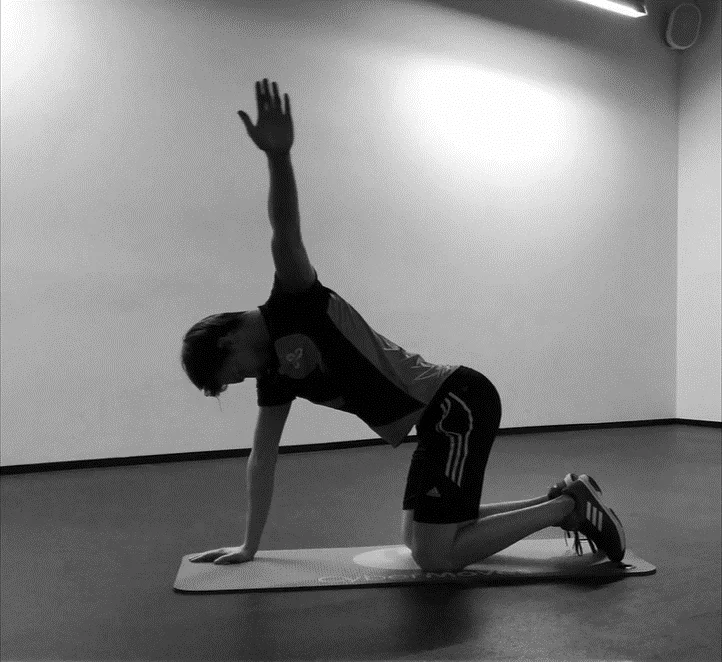
The primary focus is on the lower and anterior traps of the scapular serratus.
You’ve obviously sat before and performed standard shoulder circles. Since the floor provides some feedback, doing these on your hands and knees gives you the advantage of being able to quickly change the pressure.
Start on your hands and knees, with your knees directly beneath your hips and your hands just below your shoulders.
Press into the ground and keep your elbows straight as you shrug your shoulders up towards your ears, back towards your hips, down away from your ears, and finally forward towards your head, forming an amazing circle.
You might try performing these circles while alternating shoulders after performing them in both directions. Make 5 circles in each direction with both shoulders, then 5 in each direction with one shoulder at a time.
Streching Exercise
L-Arm Stretch: Adduction to the side
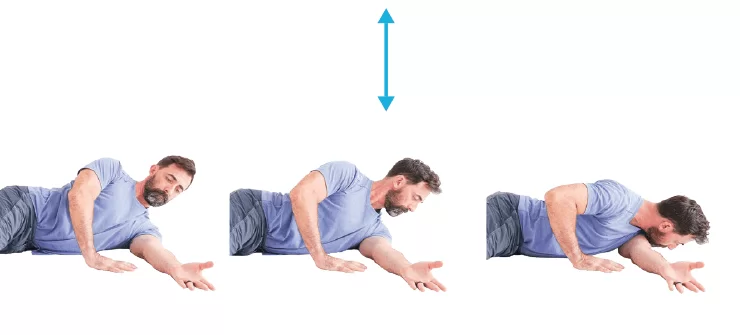
Target: posterior shoulder capsule and rotator cuff
This is one of my favorite stretches since it does a great job of stretching the rotator cuff and the rear of the shoulder. It could feel a little odd at first, but keep trying until you find a situation where you feel mostly at comfortable.
Lay on your stomach with one arm by your side to begin. Extend your other arm across your chest, palm up, without allowing your shoulder to shrug excessively up towards your ear.
Pull your chest towards the floor, making use of your shoulder muscles, to give your shoulder capsule a great stretch.
Maintain the stretch as you enter and leave the stretched position. Stretch 10 times in and 10 times out after finding a comfortable position, then hold for 30 seconds. Three times in total, repeat this process.
Laying flat while stretching the arms outward: horizontal abduction
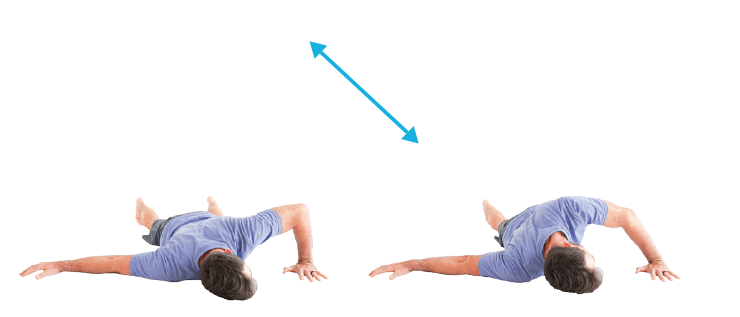
Goal: Pec major
Here is a stretch for the front of the shoulder and the chest. With this one, you’ll focus on one side at a time.
Start by lying on your stomach in the prone position, one hand on the floor, and elbow bent.
To feel a stretch in your chest, shift your weight in the direction of your hand.
Enter and exit the stretched posture while maintaining the stretch.
Once you’ve settled into a comfortable position, stretch 10 times in and 10 times out before holding for 30 seconds. Three times in total, repeat this series.
Tall Kneeling Arm Raises: Flexion of the Shoulder
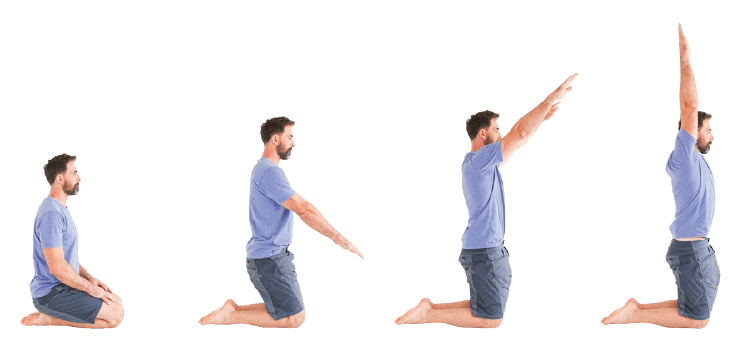
Goal: lats
Mobile Shoulders tall kneel with raised arm
This exercise can greatly aid in loosening up your stiff shoulder muscles because it engages both the hips and the shoulders.
Start by sitting with your feet between your butt in the kneeling position, often known as the “seiza”.
As you raise your arms overhead straight, lift your hips as well.
You will be in a “tall kneeling” stance with your arms raised when you reach the top. In the top position, be careful to truly open up the shoulders, but avoid arching your back.
This shoulder stretch should be entered and exited five times, followed by a 15–30 second hold.
Tall kneeling arm raises to the side: the abduction of the shoulder
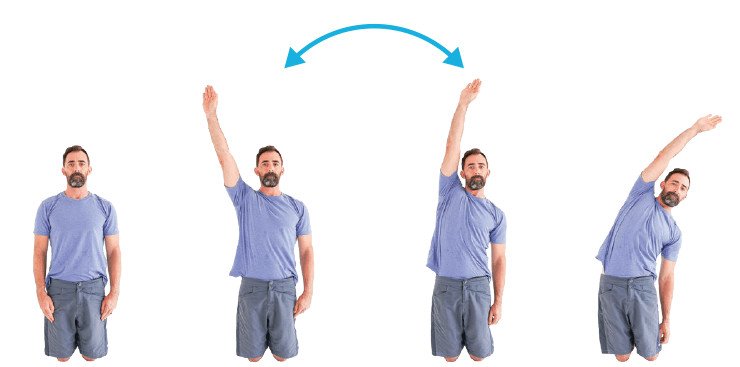
Aim for the lats and obliques.
Starting in the same position as the previous stretch, this one will feel more intense in the lats and the back of the shoulder.
Start out in a tall kneeling position with your feet under your butt, then press your hips forward until you are kneeling on your shins.
Keep one arm by your side and extend the other arm up and across to the other side instead of extending straight up overhead.
To experience a wonderful stretch in your lats and back of the shoulder, concentrate on reaching through the shoulder. Five times in and out of the shoulder stretch, followed by a 15–30 second hold. Replicate on the other side.
Extension of Clasped Hands with Shoulder Extension
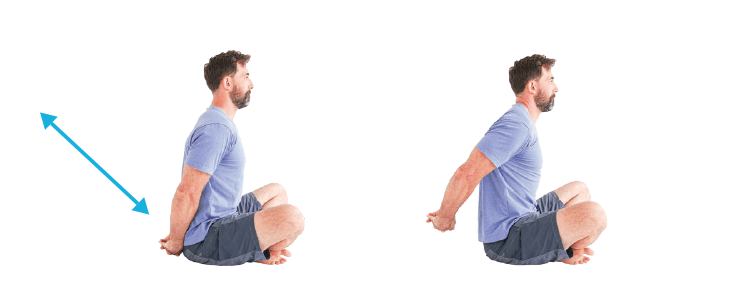
Target: mid/upper traps and back deltoids
You can work on that rounded posture that so many of us have by working on shoulder extension with the last stretch in this series.
Start by sitting down. While Jeff is seated cross-legged in the video, you should sit however is most comfortable for you. You can sit on a chair or bench as long as it doesn’t have a back if the floor is too difficult.
Straighten your elbows and place your hands behind your back. As you sit up straight and tall, pull your arms up and back. Focus on pulling your shoulder blades together as you start the stretch.
Five times in and out of the stretch, followed by a 15–30 second hold.
The most important thing to do when shoulders that are stiff are preventing you from moving forward is to solve that issue! These activities will be useful in achieving that.
However, you could be thinking about the origin of your shoulders’ tightness. Let’s examine it, then.
Your shoulders will relax and your upper body tension will decrease as a result of the roll. It’s a fantastic pre-workout stretch as well.
Side shoulder wall
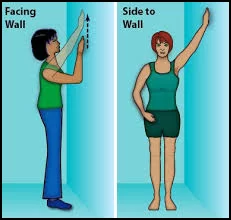
Advice: Choose a lightweight so you can start slowly.
This is a great movement to evaluate your range of motion and gradually increase it.
Shoulder wall slide technique:
Place your feet a little bit away from the wall and lean your back against it.
Hands facing up, bend elbows to a 90-degree angle.
Forcing your arms and elbows against the wall.
Slide your arms slowly up the wall above your head.
Rub the shoulder blades together gently.
Complete 3–5 sets of 5-8 reps.
Remind yourself to activate your core!
Stretching the shoulder with a needle
This traditional yoga position will relax your shoulders and loosen up your.
Cross-arm stretch
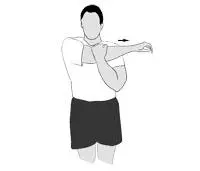
The rotator cuff muscles are targeted by the cross-arm stretch. A proper stretch should be felt in the back shoulders.
To perform this stretch:
Stand with your feet slightly wider than shoulder-width apart and your right arm somewhat higher than shoulder height.
Move your right arm slowly across your body while supporting it with your left hand by placing it on your right elbow.
Keep your body in this position for at least 30 seconds. Repeat on the other side.
Repeat each side 3-5 times.
Sleeper stretch
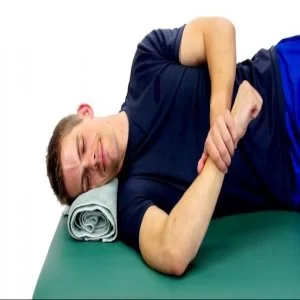
Snyder loves the sleeper stretch because it works the shoulder’s internal rotation well.
When dealing with a shoulder injury or rehab, this stretch is frequently advised.
While this stretch may be done on both sides for general health, if you have an injury, the emphasis should be on the injured side.
To perform this stretch:
Lay on your affected side. Choose a side to begin with if you are not injured or in pain. Your shoulder blades should be built beneath you.
Bend your arm such that your fingers are pointing upward while bringing your elbow straight out from your shoulder. This is where you should start.
Using the unaffected arm, gently guide this arm towards the floor. Stop when you experience a stretch in the back of the affected shoulder. Keep your body in this position for up to 30 seconds. Perform 3 repetitions before switching sides.
Doorway stretch
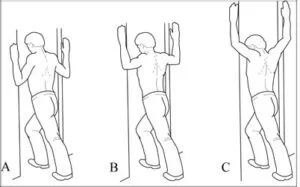
The doorway stretch allows you to extend each side of your chest separately, which is useful if one side of your chest is tighter than the other.
This stretch helps to expand the pectoralis muscles in your chest and improves your shoulder range of motion.
To perform this stretch:
Stand in a doorway with your arms and elbows at a 90-degree angle. Your feet should be spread apart.
Raise your right arm to shoulder level and rest your palm and forearm on the doorway.
Lean into the stretch gently, just going as far as you feel comfortable.
Attempt to hold the stretch for no more than 30 seconds. Repeat on the other side. Repeat on each side 2-3 times.
Child’s pose sliders

Child’s Pose, also known as a yoga pose, is a fantastic technique to expand the shoulder joint into flexion (forward bending) and stretch your latissimus dorsi, or lat, muscles, according to Snyder. This position can also help your lower back.
To perform this stretch:
Kneel on a workout mat. Check that your body is standing.
Crawl your hands forward gradually until your arms are outstretched in front of you. Maintain a downward glance.
Reduce your body to your thighs and place your forehead on the ground.
Hold this position for three deep breaths.
Repeat 3-5 times more.
Cow face pose
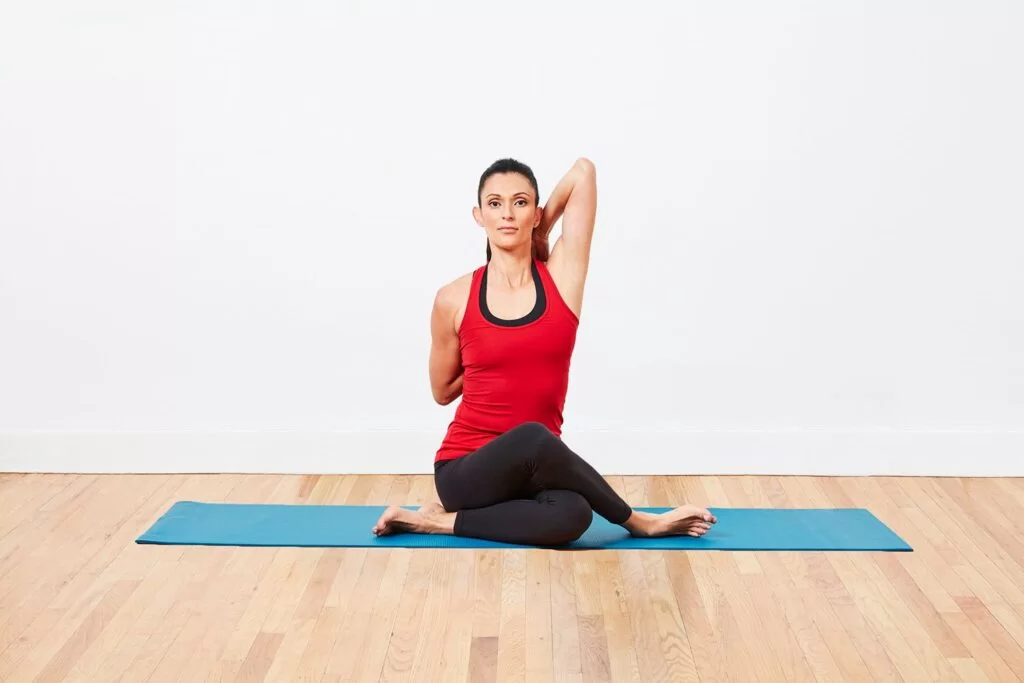
Sit on the yoga mat, back straight, and legs stretched out in front of you.
Put your feet together and your palms against your hips.
Bend your right leg and put your right foot beneath your left buttock.
Put your right knee on top of your left one.
Raise your left arm over your head, elbow bent. At the same time as you interlock your hands, bring your right arm behind your back.
Take a few deep breaths and remain for as long as you’re comfortable.
Release your arms as you exhale.
Uncross your legs and do the same with the opposite leg.
Prone lat pulls
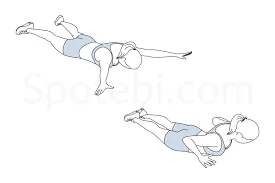
Lightly horizontal with your arms out in a purpose position.
Lift your head, chest, shoulder, and arms.
Bend your elbow, then lower yourself after extending it.
Lift, extend arms, bend, and lower down.
Thread the Needle shoulder
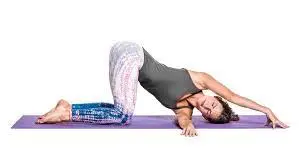
stretch: Begin on all fours on the ground with your hands under your shoulders.
Put your toes in.
Open the left-hand chest.
Place your right arm under your sternum.
Lend out your left arm in the air.
Keep your right arm and both knees on the ground for support.
30 seconds should be held before exchanging to the opposing side.
Pro tip: Take a deep breath and look at your raised hand.
Strenghting Exercise
Shoulder press with a dumbbell
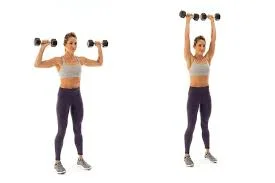
You can improve your strength and range of motion with this shoulder press.
Dumbbell shoulder press technique:
Hold a dumbbell in each hand at shoulder height while standing or sitting.
Your elbows should be 90 degrees bent.
As you raise the weights above your head, extend through the elbows.
Return to the starting position gradually.
Perform 10 to 15 repetitions.
Advice: Don’t use weights excessively. The goal is to become greater in mobility, not heavier.
Standing row
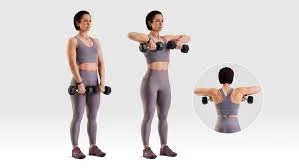
Your traps, rhomboids, and biceps can all gain strength from this upright exercise.
Performing a standing row
Take a barbell or two dumbbells.
Bring your hands to the middle of your thighs.
Arms straight down, let the weights hang in front of you.
Your palms should be facing your body.
Exhale as you raise the weights straight up toward your chin.
Take a minute to pause.
Go back to the beginning place.
Perform 10 to 15 repetitions back.
Shoulder to shoulder
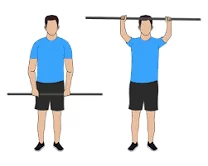
The shoulder pass-through exercise works the surrounding shoulder muscles while increasing joint mobility.
Holding a long stick, such as a broomstick or PVC pipe, is required for this exercise.
To complete this activity: Put your arms in front of your body while standing with your feet shoulder-width apart.
Use an overhand grip to hold a stick, such as a broomstick or a piece of PVC pipe. Your arms will be wider than shoulder-width. Ensure that the stick or pipe is perpendicular to the ground.
Keep your arms straight as you slowly elevate the broomstick or pipe above your head while contracting your core. Go go as far as you are comfortable doing.
Hold the position for a short while.
Go back to the beginning place. 5 Repetition
High-to-low rows
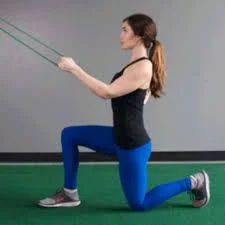
Hi-to-low rows, according to Snyder, really push the upper back and thoracic muscles, which offer a lot of stability to the shoulder joint. A resistance band is required for this workout. This exercise may also be done at the gym with a cable machine.
To complete this activity, follow these steps:
Attach a resistance band to a strong item over your shoulders.
Kneel on one knee and grasp the band with the other hand. The other hand can be placed by your side.
Pull the band towards your body while maintaining a straight torso and arm. Focus on tightening the joint between your shoulder blades. Repeat the process by going back to where you were. On each side, complete 2-3 sets of 10 repetitions.
Reverse Fly
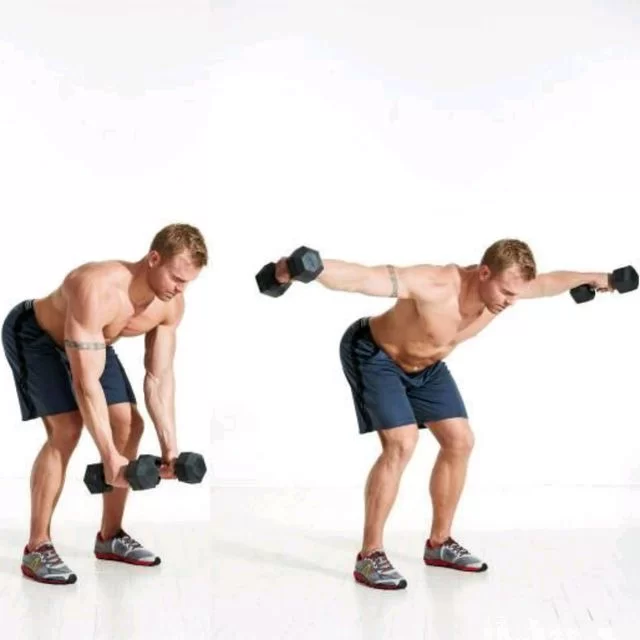
The reverse fly exercise, like the high-to-low rows, targets the upper back and thoracic muscles, which offer a lot of stability to the shoulder joint. A set of light dumbbells is required for this workout.
To complete this activity, follow these steps:
Each hand should hold a dumbbell.
In the Standing Position, while keeping your feet shoulder-width apart, your knees should be slightly bent. Bring your waist forward while focusing on your core. Keep your back straight. You’ll be holding out your arms. Move your arms away from your body by raising them. Concentrate on pressing your shoulder blades together. When you reach shoulder height, stop.
Slowly re-enter the starting position and then repeat. Perform three sets of ten repetitions.
Rotation with dumbbell

Rotation with a dumbbell prepares the shoulder for overhead and throwing actions. According to Snyder, most athletes who raise their arms up and externally spin throughout their sport do this.
To complete this activity, follow these steps:
Holding a light dumbbell in your right hand, stand with your feet shoulder-width apart.
Raise your elbow and arm to shoulder height. Your front hand will be facing the ground.
Rotate your shoulder to elevate your arm and weight so that your hand is towards the ceiling.
Return to the starting position slowly and repeat before switching sides.
Perform 2-3 sets of 12 reps on each arm.
Stretches for shoulder mobility
According to Snyder, the major advantage of extending the shoulder is to avoid muscle and joint damage.
Because the stretches mentioned here are static, consider completing them after a workout or immediately following a warm-up that includes dynamic stretches.
Reason for restricted shoulder motion:
- A bad posture.
- Chronic tension.
- Stretching or overusing your joints or muscles in excess.
- Things like carrying extremely large objects or spending too much time sitting down.
- Stooping or hunching excessively.
Additionally, shoulder stiffness may be a sign of ailments like:
- Gout
- Lupus
- Arthritis
- Lyme illness
The benefits of stretching even when not restricted
You can benefit from stretching even if you don’t have a stiff back or shoulders. Some advantages are as follows:
Reduces tension:. Muscle tension and stress frequently go hand in hand. Your muscles can become more flexible and relaxed after stretching. Try to concentrate on your neck, upper back, shoulders, or any other regions where you tend to carry the most tension.
Improves flexibility:. Regular stretching might help you become more flexible. This can ease daily tasks and stop your mobility from declining as you age.
Makes the blood flow more.: Stretching may enhance circulation and boost blood flow to your muscles, according to research. By doing this, you might lessen delayed onset muscle soreness and speed up your post-workout recovery.
Improves your posture.: Combining stretches and strength training can help to promote proper spinal alignment and lessen musculoskeletal pain.
Aids in avoiding back pain:. A regular stretching regimen lowers your likelihood of experiencing muscle strain. (PSA: Avoid overworking an injury that is already present.)
Prepares you for action:. Before working out, it’s always a good idea to stretch well. According to studies, stretching can help your muscles get ready for exercise.
The benefits of shoulder mobility include:
- Reduced risk of injury: A well-mobile shoulder is less likely to be injured during everyday activities or sports. This is because the muscles and ligaments around the shoulder joint are stronger and more flexible when they have a full range of motion.
- Improved performance: Good shoulder mobility can help athletes improve their performance in sports that require a lot of shoulder movement, such as swimming, baseball, and tennis. This is because they are able to generate more power and speed when their shoulders are able to move through their full range of motion.
- Better range of motion: Good shoulder mobility allows you to move your arms through a wider range of motion, which can improve your ability to perform everyday activities and enjoy your hobbies. For example, if you have good shoulder mobility, you will be able to reach higher shelves, put on a coat more easily, and brush your teeth more effectively.
- Reduced pain: Good shoulder mobility can help to reduce pain and stiffness in the shoulder joint. This is because the muscles and ligaments around the shoulder joint are better able to support the joint when they have a full range of motion.
In addition to these benefits, good shoulder mobility can also help to improve your posture and balance. It can also help to reduce stress and tension in the upper body.
Overall, good shoulder mobility is important for overall health and well-being. It can help you to move more easily, perform everyday activities more effectively, and reduce your risk of injury.
The value of proper conduct
Your workout can succeed or fail if you use good form. It can lessen your chance of being hurt and increase the efficiency of each stretch.
Here are some guidelines to keep your form looking great:
- Avoid maintaining a stretch for too long.
- Stop if it hurts! Never go beyond your limits.
- As you transition from one move to the next, go slowly.
Avoid entering a stretch cold. First, warm up. Light aerobics for ten minutes is usually sufficient, however, some people require longer to get sweaty.
Here are some tips for preventing tight shoulder joints:
- Warm up before exercise.
- Stretch your shoulders regularly.
- Maintain good posture.
- Avoid repetitive movements.
- Strengthen your shoulder muscles.
Safety Tips
Follow these recommendations to ensure both the security and effectiveness of your shoulder mobility exercises.
- If you experience any pain, stop. Although a little discomfort is typical, you shouldn’t experience any severe pain as you perform these stretches or exercises. If discomfort arises, stop immediately.
- Don’t forget to breathe. Your shoulders, back, and other body parts can relax as a result of breathing. You might be able to stretch or perform a workout for longer if you breathe properly.
- Begin gradually. Don’t try to do too much too quickly if you’re new to workout or shoulder exercises. Initially, do only a few stretches and exercises; as your strength increases, add more.
Consult your physician or physical therapist. Before performing shoulder mobility exercises and stretches, it’s vital to consult with your doctor or physical therapist if you’ve recently had shoulder surgery or an accident, or if you have a lot of shoulder pain.
Contraindication of shoulder mobility exercises:
Shoulder mobility exercises are generally safe for most people, but there are some contraindications, or conditions in which they should be avoided. These include:
- Acute shoulder injury: If you have an acute shoulder injury, such as a rotator cuff tear or a dislocation, you should avoid shoulder mobility exercises until the injury has healed.
- Shoulder instability: If you have shoulder instability, meaning that your shoulder joint is loose and prone to dislocation, you should avoid shoulder mobility exercises that could put your shoulder at risk of dislocating.
- Arthritis in the shoulder: If you have arthritis in your shoulder, you should avoid shoulder mobility exercises that cause pain.
- Recent shoulder surgery: If you have recently had shoulder surgery, you should talk to your doctor or physical therapist about when it is safe to start doing shoulder mobility exercises.
If you have any of these conditions, it is important to talk to your doctor or a physical therapist before starting any shoulder mobility exercises. They can help you to develop a safe and effective exercise program that is appropriate for your individual needs.
Here are some additional tips for doing shoulder mobility exercises safely:
- Start out carefully, then progressively up the duration and intensity of your workouts.
- When you feel any pain, pay attention to your body and stop.
- Use proper form when doing the exercises.
- Warm up before doing the exercises and cool down afterward.
If you are unsure about how to do any of the exercises safely, ask a qualified personal trainer or physical therapist for assistance.
Conclusion
The shoulder is the most mobile joint in the body, but it can become stiff and less mobile over time. Maintaining good shoulder mobility is important for preventing injuries and for maintaining a healthy and active lifestyle.
Specific shoulder exercises and stretches are an important part of any workout regimen, whether you’re an athlete, a gym enthusiast, or simply want to improve the health, strength, and mobility of your shoulder muscles and joints.
The shoulder is the most mobile joint in the body, and it has a wide range of motion in all directions. This mobility is essential for many activities of daily living, as well as for sports and exercise.
There are a number of factors that can affect shoulder mobility, including:
- Age: As we age, the shoulder joint can become stiffer and less mobile.
- Activity level: People who are active and participate in regular exercise tend to have better shoulder mobility than those who are inactive.
- Injury: Injuries to the shoulder joint, such as rotator cuff tears or dislocations, can reduce the range of motion.
- Certain medical conditions: Certain medical conditions, such as arthritis, can also affect shoulder mobility.
Maintaining good shoulder mobility is important for preventing injuries and for maintaining a healthy and active lifestyle. There are a number of exercises and stretches that can be done to improve shoulder mobility.
Here are some general conclusions about the mobility of the shoulder:
- The shoulder is the most mobile joint in the body, with a wide range of motion in all directions.
- Shoulder mobility is essential for many activities of daily living, as well as for sports and exercise.
- A number of factors can affect shoulder mobility, including age, activity level, injury, and certain medical conditions.
- Maintaining good shoulder mobility is important for preventing injuries and for maintaining a healthy and active lifestyle.
If you have any concerns about your shoulder mobility, be sure to talk to your doctor or physical therapist.
Performing shoulder-specific exercises and stretches can help:
increase your range of motion
reduce tension
improve flexibility
prevent injury
Work with a personal trainer or physical therapist if you’re new to shoulder stretches and exercises. They can assist you in doing the actions properly and technically.
FAQs
Does yoga help with mobility?
Many people who want to increase their mobility may benefit from yoga. Yoga is fantastic if you enjoy it, but it’s not necessary to increase mobility. A lot depends on the teacher, class, and style. Some instructors might be able to meet your specific demands, while others will insist that you remain in the class no matter what. There are more yoga-related activities (chanting, meditation, etc.) that you might not necessarily wish to do.
What is the cause of tight shoulders?
When it comes to how our systems operate, the old adage “use it or lose it” holds a lot of truth. To maintain our muscles and other body tissues functioning smoothly, we need to move our shoulders through their complete range of motion, reaching as high as we can, and extending to the side and behind us. Movement is also required to keep the fluid in our joints and the blood to our muscles flowing and supplying nutrients.
Tight muscles can also be caused by our neurological system’s reaction to inactivity. The “connections” are less effective, as if our body “forgets” how to move. This is why we typically feel more relaxed after only a few minutes of exercise. There is some physical warming up, but there is no genuine stretching of our muscles; instead, we just begin to move them better as those connections increase.
How can you identify tight shoulders?
Simply put, you can tell whether you have tight shoulders if you feel constrained when doing movements that you desire and need to accomplish on a regular basis. You probably have tight shoulders if you fear having to reach up to the upper kitchen cabinets, scratch behind your back, or reach behind the rear seat while driving.
It would be simple to just provide a list of “standards” to achieve that indicate whether or not you have tight shoulders, such as: Can you reach over your head at a 180-degree angle? Can you make contact with your hands behind your back? These tests can be useful, but they are arbitrary.
Looking at how you feel and move throughout the day can help you provide a better, more individualized response to that question.
When you reach up to clean or put away dishes, how do your shoulders feel? Do you find it difficult and painful to reach behind you? What additional tasks and tasks are more difficult for you to do as a result of your stiff shoulders?
Are there any obstacles preventing you from engaging in the hobbies and physical activities you enjoy?
Why is maintaining shoulder mobility important?
Every joint in the body has to be kept mobile, but the shoulder in particular is especially important since, in addition to increasing your risk of injury there, decreased mobility can also have an effect on other joints like the neck and elbow.
Does stretching make you more mobile?
With regular stretching and more physical activity afterward, it most certainly can.
Stretching for a short amount of time, from a few seconds to a few minutes at a time, tends to increase your body’s range of motion right away. This occurs in an improvement in your “stretch tolerance.” Basically, how much stretching your body can withstand.
However, because it is fleeting and lasts only a few minutes, this isn’t definitely a rise in your mobility. However, if you make the most of this window of opportunity to move the stretched area more, repeat the exercise at this time, and continue doing this consistently over the course of a few weeks or months, you should notice gains in your mobility.
How do you improve the mobility of your shoulders?
The first step in achieving your shoulder mobility goals is determining which specific shoulder movements require additional practice. You can then choose the best shoulder exercises to help by, for example, sitting with your shoulders back, extending fully upward above your head, and reaching behind you to scratch your back.
The most effective approach combines static (maintaining a stretched stance) and dynamic (active motions). This type of workout combines the control necessary to go into and out of stretched positions with learning how to unwind in that position. To increase and maintain your shoulder mobility, both are required.
How do you make sure that your shoulders have the full range of motion?
The most beneficial approach combines static (maintaining a stretched stance) and dynamic (active motions). This type of workout combines the control necessary to go into and out of stretched positions with learning how to relax in that position.
For instance, the bent arm chest stretch is one of our favorite shoulder stretches. You’ll work on contracting the muscles, moving into and out of the stretched posture with control, rather than just going into the stretch and holding it for a long time. You will then maintain your stretched position for a brief period (15–30 seconds). 3 or more times.
References
- Lindberg, S. (2020, January 10). 10 Shoulder Mobility Exercises and Stretches. Healthline. https://www.healthline.com/health/shoulder-mobility-exercises
- Mpt, J. I. (2023, August 8). Shoulder Mobility Exercises: 6 Proven Stretches. GMB Fitness. https://gmb.io/shoulder-mobility/
- Bass, L. (2021, February 25). Brush Your Shoulders Off with These 11 Shoulder Mobility Exercises. Greatist. https://greatist.com/fitness/shoulder-mobility-exercises
- Falk, M. (2022, December 23). 8 Shoulder Mobility Exercises That Will Help You Move with Ease. Shape. https://www.shape.com/shoulder-mobility-exercises-6979672
- Whitten, C. (2021, August 24). How to Stretch Your Shoulders. WebMD. https://www.webmd.com/fitness-exercise/features/how-to-stretch-shoulders
- Standing Child Pose. (n.d.). Hingehealth. https://www.hingehealth.com/resources/articles/shoulder-mobility-exercises/

